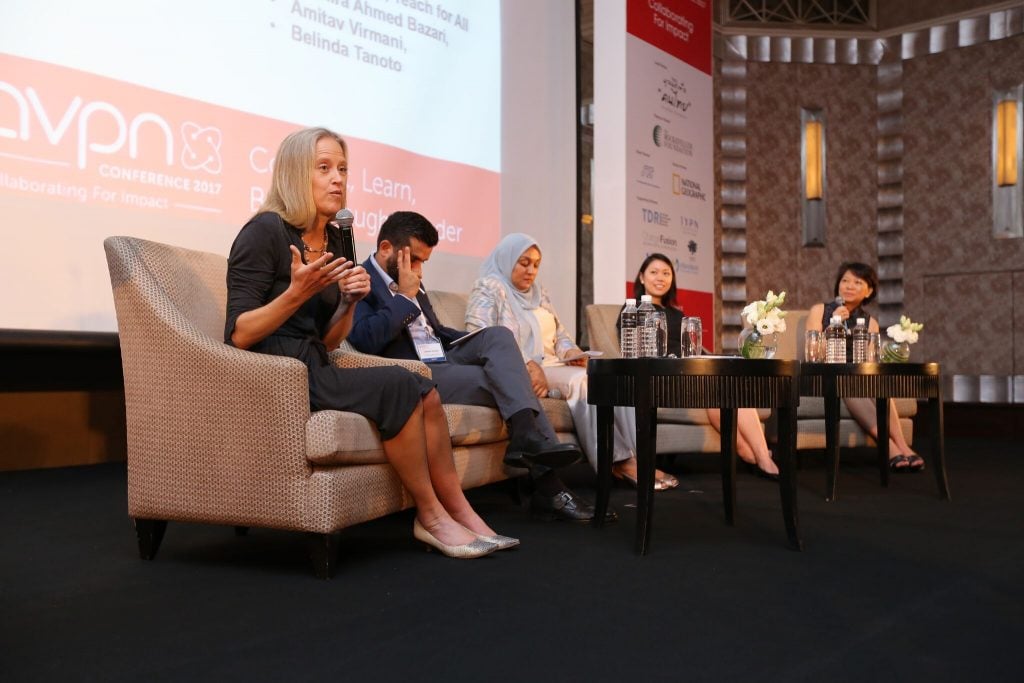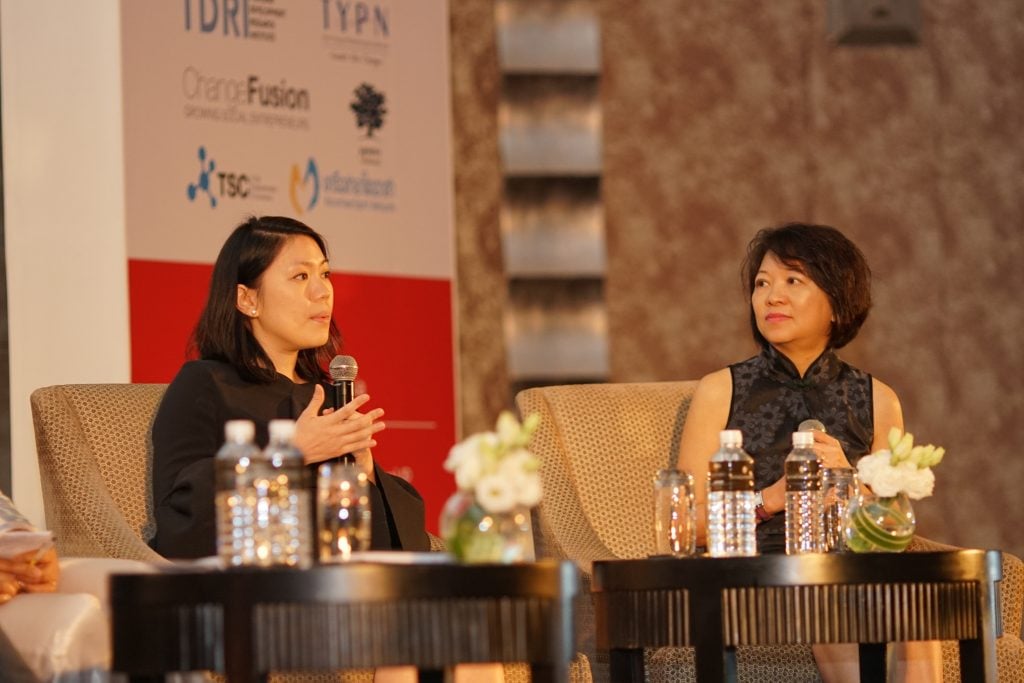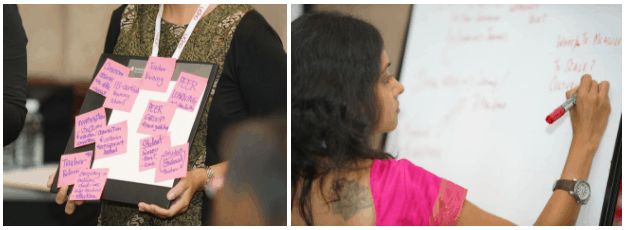- Education was one of the most pertinent themes at the AVPN Conference 2017, highlighting innovations, challenges and lessons learned in the space from philanthropy and social investing’s perspectives.
- There has been a global shift from the need of simply creating access to education, to creating access to quality and inclusive education.
- While education is a top issue for many organizations, collaboration is minimal.
- The conversation about education will be continued this September at the 2017 India Summit, which will be based on the theme of “Investing for Impact in Education.”
Among the many social challenges highlighted at the 2017 AVPN Conference, the theme of education was undoubtedly at the forefront and still resonates with great relevance even after the Conference. Five different sessions dedicated to education were held during the Conference, covering a wide range of topics. Among these pertinent themes were the opportunities and challenges in quality and inclusive global education, the relationship between education and social investing, and the role of technological innovations in education.
Aligning Outcomes for Maximum Impact
The Conference kicked off with the plenary “Quality Education for All.” This session was in line with the UN’s Sustainable Development Goal 4, which seeks to “ensure inclusive and quality education for all and promote lifelong learning.” Led by moderator Lim Lai Cheng of Singapore Management University, and an impressive panel featuring Wendy Kopp, CEO and co-founder of Teach for All, Amitav Virmani, CEO and founder of The Education Alliance, Belinda Tanoto, trustee at Tanoto Foundation and Shahira Ahmed Bazari , managing director of Yayasan Hasanah, the session highlighted innovations, challenges and lessons learned in the education space from philanthropy and social investing perspectives. One key takeaway was the urgent call for effective partnerships and coordination of outcomes between government, social investors and social purpose organizations. This creates a need for consensus on a clear definition of what constitutes “quality education” at all levels, which is “difficult to measure”, admits Tanoto. However, it remains equally important to look at the issues in education through the specific needs of each geography. “The roots of the problems are similar, but the answers need to be contextualized… we need to embrace the complexity.” says Kopp.
The discussion from the morning plenary set the stage for an afternoon workshop entitled “Social Investing in Education: Outcomes Alignment Consultation”, facilitated by key resource providers like Sattva, The Education Alliance, Central Square Foundation, Edelgive Foundation. In this lively discussion, the question was raised of whether it is fundamentally right to assess children by placing them in “buckets” based on standardized assessments. Beyond this, delegates discussed best practices to align all stakeholders, design outcomes, and indicators that create a wide range of agreement. When establishing a common framework, it is crucial to consider all players that make up the value chain of education, from students to teachers to parents to the state.
Innovations and Obstacles to Deliver Quality Education
The education discussion was carried on in Day 1 of the conference – this time, with a technology-focused thrust. Led by Aarti Mohan of Sattva Media and Consulting, the “Disruptive Innovations in Education” discussion focused on notable innovations in the education space, and how technology can best be harnessed to elevate the learning experience. Utilizing technology could significantly enhance data analysis for decision-making, allowing for teachers to focus on teaching and leaving analysis of gaps and areas of improvement to school heads and ecosystem players. However, it is vital that technology is used in ways that complement the existing systems and teachers, rather than attempting to replace them. Zhang Weina, research director of Asia Centre for Social Entrepreneurship and Philanthropy, expressed this sentiment, saying, “Teachers, not machines, are to teach students values… other tools are to complement this process of teaching.” If not used properly, technology has potential to be a major distraction to students in the classroom. The impact of education technology is undeniable, and could bridge the learning gap across geographical and social boundaries. However, linguistic and contextual understanding is necessary for education technology to be effective instead of detrimental.
(From left to right): Aarti Mohan (Co-founder & Principal, Sattva), Sunit Shrestha (Founder & Managing Director, Changefusion), Connor Diemand-Yauman (Co-Founder & CEO, Philanthropy University), Zhang Weina (Research Director, ACSEP), Sandeep Aneja (Managing Partner, Kaizen Private Equity), Janine Teo (CEO, Solve Education!)
On the other hand, a breakout session entitled “Unlocking the Potential of Children Through Quality and Inclusive Education” pinpointed some of the most challenging obstacles when it comes to providing quality education for all children. Moderated by Neil Ghosh of The Global Fund for Children, the panel picked up a common thread underlying all the education-themed sessions by agreeing that the goal of global education is transitioning from simply creating access to education to creating access to quality education. To enhance the quality of education at the global level, as Dave Shepherd, Director of College Advancement of UWCSEA pointed out, “we must leverage something that is high quality but exclusive and make it less exclusive, which will in turn have a higher benefit to society.” The panelists discussed innovative ideas and best practices to achieve this goal. Naghma Mulla, CEO of EdelGive Foundation, pointed out that education must be viewed through the lens of a specific geography, as different societies have different needs. In India, the biggest problem is not access to schooling; the issue lies with the substandard delivery of education in public schools. “We look for projects that conduct high quality education programs with the existing government infrastructure through public-private partnerships.”
(From left to right): Neil Ghosh (Executive VP, GFC), Tina Sciabica (Executive Director, READ Global), Dave Shepherd (Director of College Advancement, UWCSEA), Tibor Van Staveren (Deputy Regional Director, ChildFund International), Naghma Mulla (Chief Operating Officer, EdelGive Foundation)
The main goal of education is to instill in children a sense of self-worth and empower them to determine their futures. Quality education enables students to give back to their societies in positive ways down the road. Dave Shepherd provided the example of alumni from UWC who now have made their careers of working hard to lobby for social change.
While the conference ended with on a hopeful note, the discussion of quality and inclusive global education is far from over. This September, AVPN will host the 2017 India Summit in Mumbai. Compared to the Conference, the one-day gathering will spur a deep-dive into the education sector, with a focus on investing for impact. Highlights of the sessions include early childhood education, impact and evaluation, and work-readiness.






















